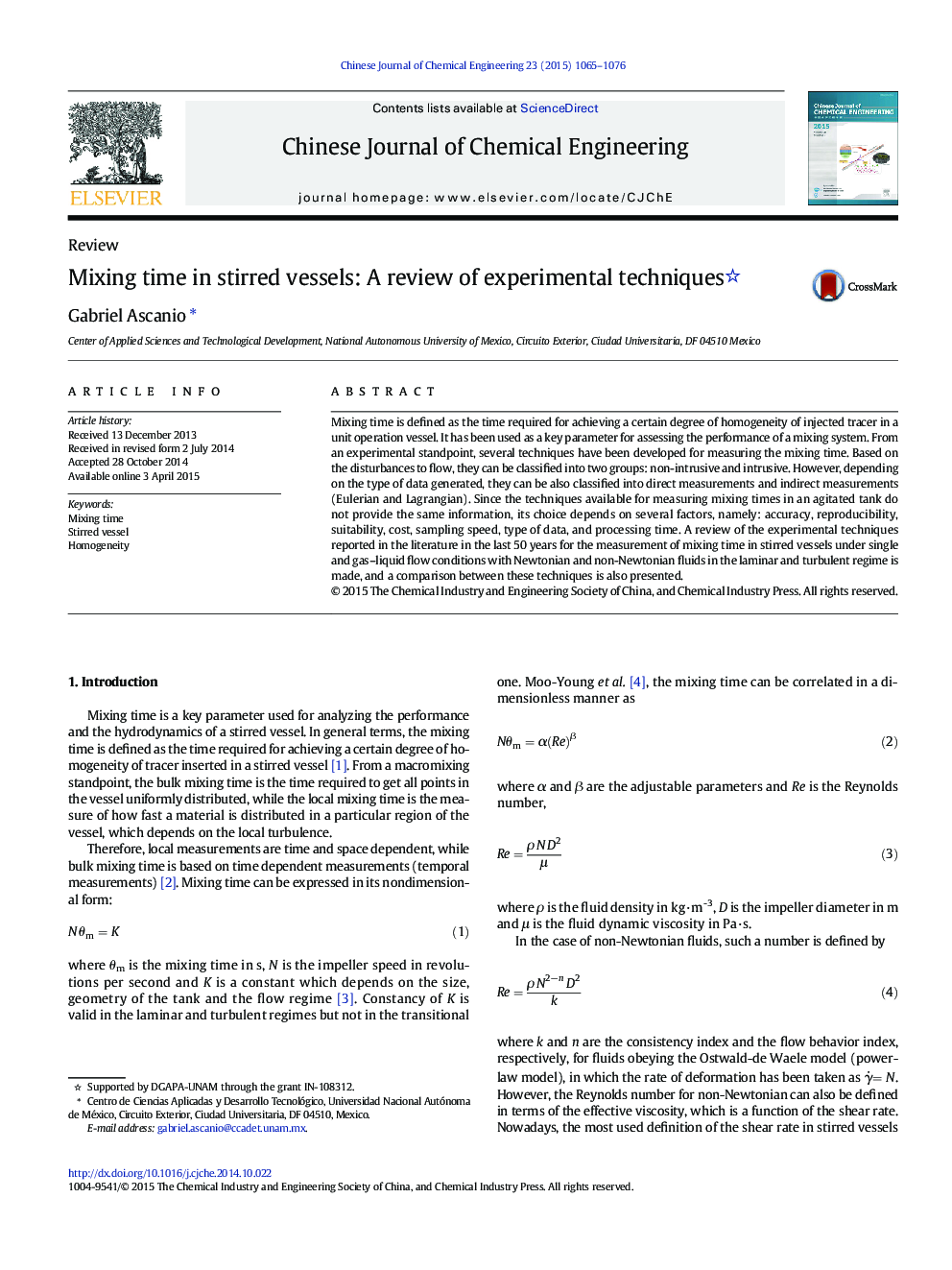| Article ID | Journal | Published Year | Pages | File Type |
|---|---|---|---|---|
| 167091 | Chinese Journal of Chemical Engineering | 2015 | 12 Pages |
Mixing time is defined as the time required for achieving a certain degree of homogeneity of injected tracer in a unit operation vessel. It has been used as a key parameter for assessing the performance of a mixing system. From an experimental standpoint, several techniques have been developed for measuring the mixing time. Based on the disturbances to flow, they can be classified into two groups: non-intrusive and intrusive. However, depending on the type of data generated, they can be also classified into direct measurements and indirect measurements (Eulerian and Lagrangian). Since the techniques available for measuring mixing times in an agitated tank do not provide the same information, its choice depends on several factors, namely: accuracy, reproducibility, suitability, cost, sampling speed, type of data, and processing time. A review of the experimental techniques reported in the literature in the last 50 years for the measurement of mixing time in stirred vessels under single and gas–liquid flow conditions with Newtonian and non-Newtonian fluids in the laminar and turbulent regime is made, and a comparison between these techniques is also presented.
Graphical abstractMixing time is defined as the time required for achieving a certain degree of homogeneity of injected tracer in a unit operation vessel. It has been used as a key parameter for assessing the performance of a mixing system. From an experimental standpoint, several techniques have been developed for measuring the mixing time. Based on the disturbances to flow, they can be classified into two groups: non-intrusive and intrusive. A review of the experimental techniques reported in the literature in last 50 years for the measurement of mixing time in stirred vessels under single and gas–liquid flow conditions with Newtonian and non-Newtonian fluids in the laminar and turbulent regime is made, and a comparison between these techniques is also presented.Figure optionsDownload full-size imageDownload as PowerPoint slide
